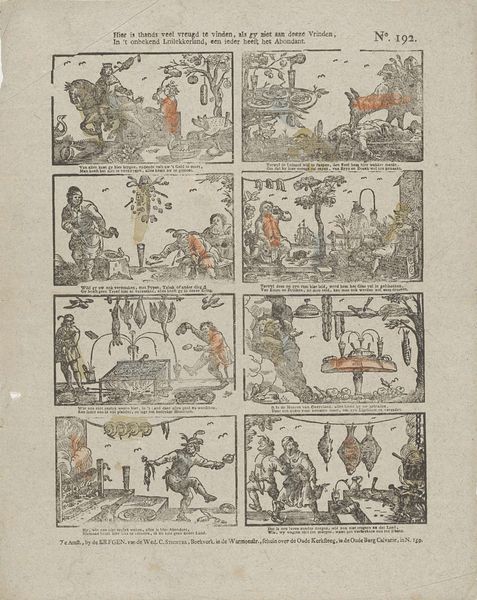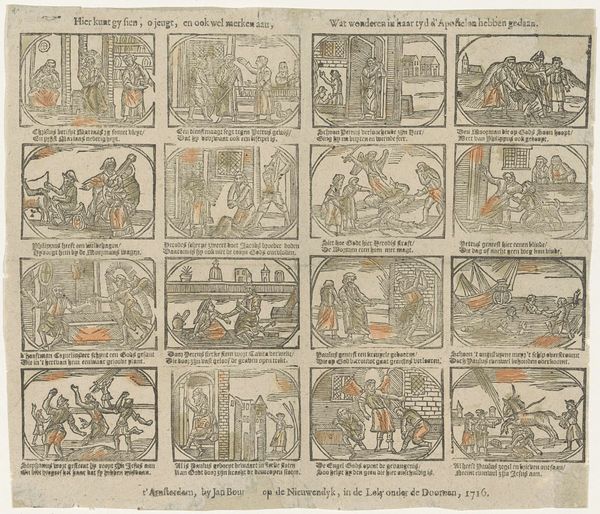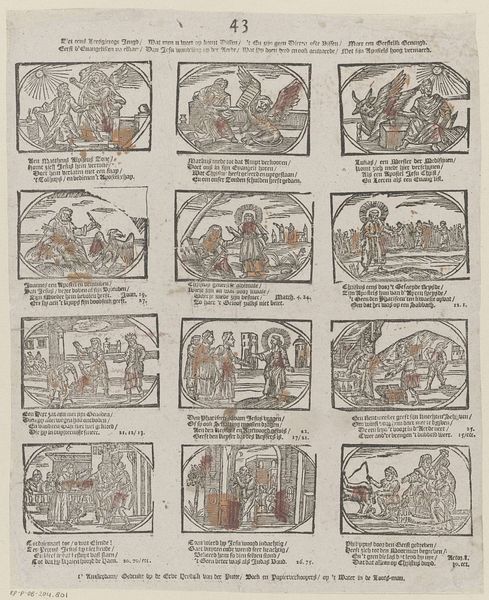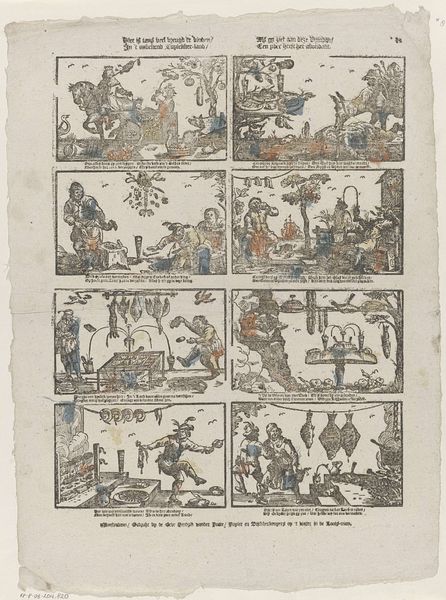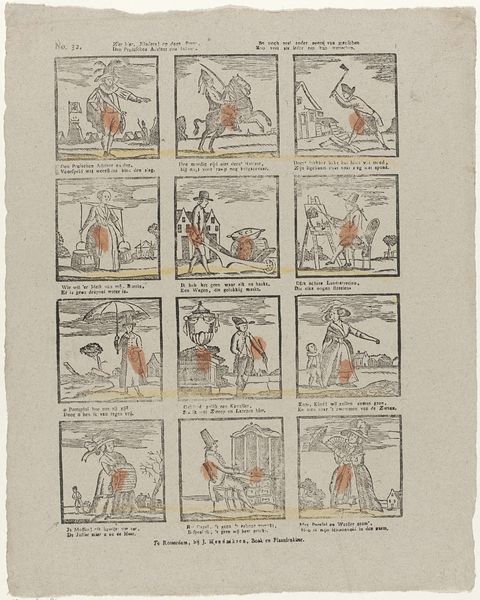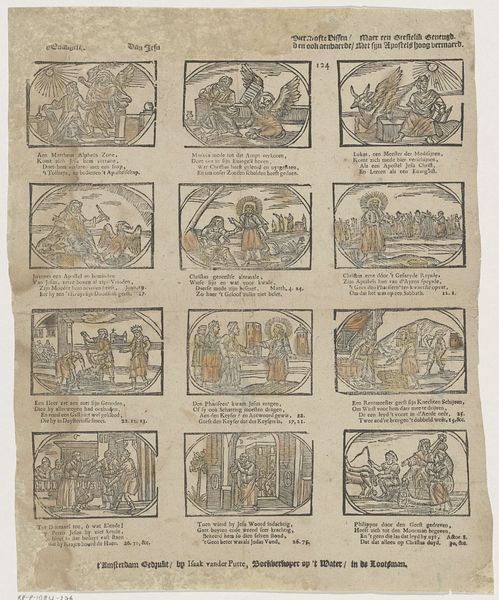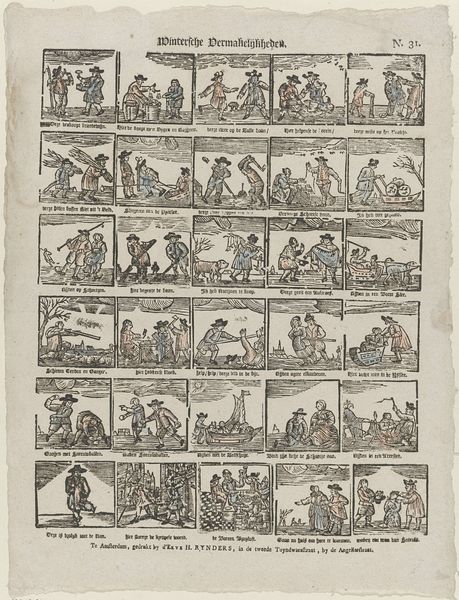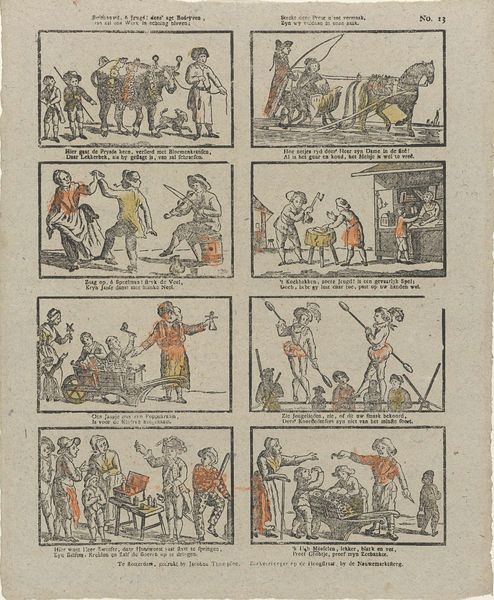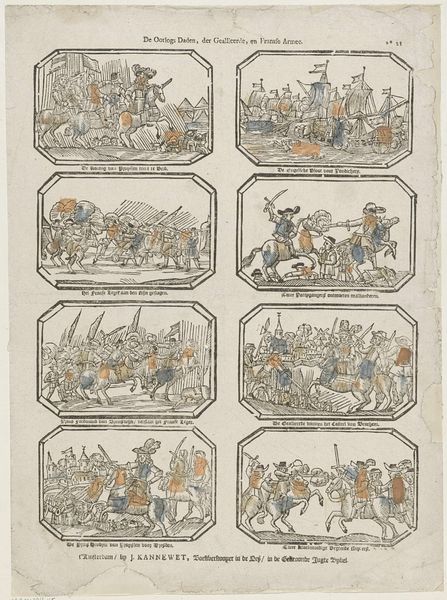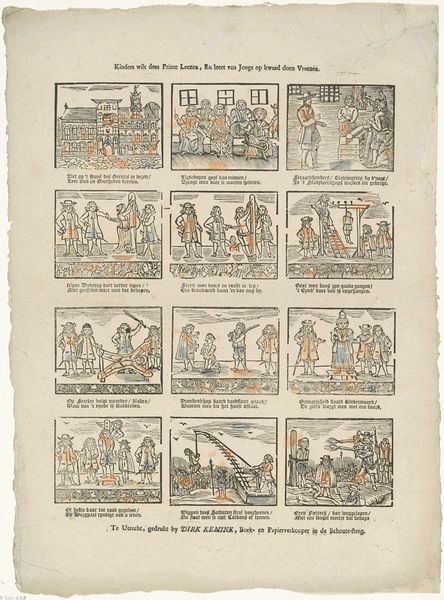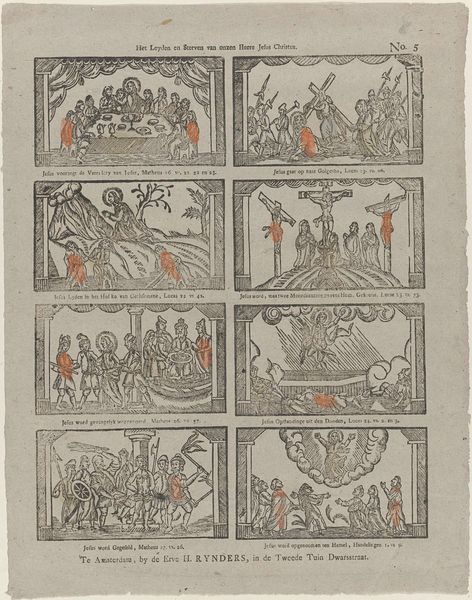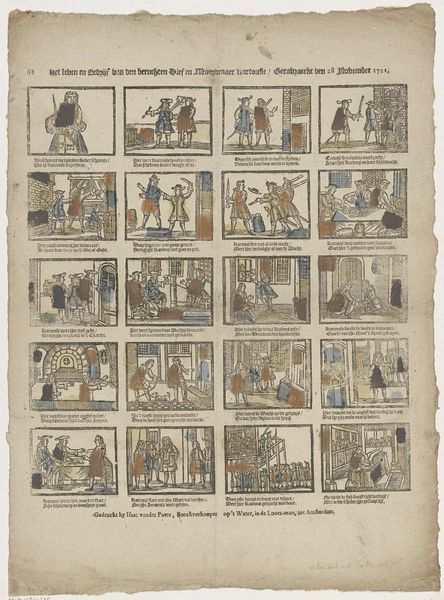
print, engraving
#
comic strip sketch
#
aged paper
#
toned paper
#
narrative-art
# print
#
sketch book
#
personal sketchbook
#
sketchwork
#
pen work
#
sketchbook drawing
#
genre-painting
#
storyboard and sketchbook work
#
northern-renaissance
#
sketchbook art
#
engraving
Dimensions: height 410 mm, width 333 mm
Copyright: Rijks Museum: Open Domain
Curator: So, this print, dating from between 1781 and 1828, is called "Geboorte van 's Werelds Heiland," or "Birth of the World's Savior," and it's attributed to Jan Hendriksen. It seems to be an engraving, likely from a larger sketchbook, showing different scenes relating to… well, the birth of the world’s savior. Editor: Wow, it's like a comic strip from a bygone era! The aged paper and faded ink give it such a mysterious, storybook feel, wouldn't you say? Makes you want to make up your own narrative, just looking at those miniature dramas playing out. Curator: Indeed. I'm intrigued by the choice of printmaking, specifically engraving, as the method of production. It would allow for multiples, a broader dissemination of the religious narrative to a possibly wider, and perhaps less affluent, audience. Consider the labor involved, too. Each plate, each print representing time and the means of communicating complex narratives in a visual, accessible format. Editor: You're so right, I hadn’t thought about the 'print' aspect of this, it is like an early form of mass media, using its materials to convey religion. It strikes me now that while the technique is pretty formal, even old-fashioned for its time, there's this wonderfully human quality in the slightly crude lines and compositions, wouldn’t you agree? Curator: Yes. The visual storytelling here clearly serves a devotional function, placing it firmly within the tradition of Northern Renaissance printmaking. But let’s not ignore the economic implications either; this wasn't just devotional. Prints like these were commodities, circulated and consumed. Editor: Precisely. It feels like an artifact from another world and another way of communicating the sacred stories of society. It speaks of dedication, both artistic and religious. I wonder what story each of the panels is really saying! Curator: In its totality, this artwork serves as a tangible representation of the intersection between art, labor, and religious belief during a specific period. Editor: A slice of history then! Now, that is something to think about… I must reflect more on the visual power held in these historical materials!
Comments
No comments
Be the first to comment and join the conversation on the ultimate creative platform.
